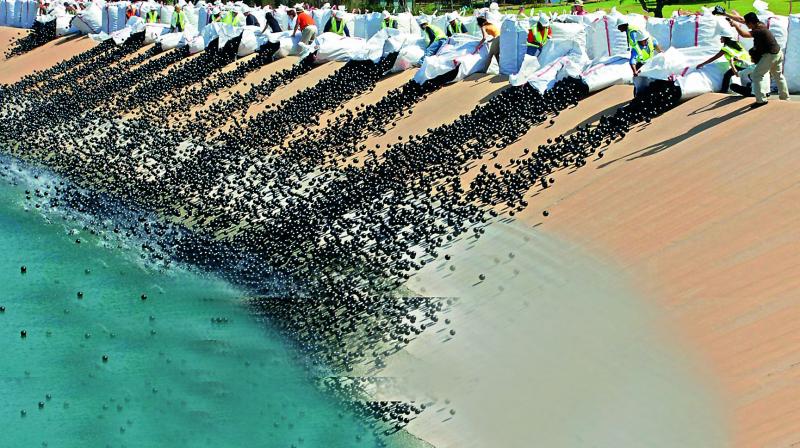Dry days: Shade Balls & saving water

The state of California in the US is in the grip of one of the harshest droughts in its history. It has been on for four years and experts say there is no end in sight as the state sits on dwindling groundwater resources. Drastic action is required. Which is why last year, the city of Los Angeles decided to place its trust on 96 million little round things called ‘Shade Balls’. These blacked-out plastic balls were dumped into a 175-acre reservoir which held 3.3 billion gallons of water. That’s enough life-giving liquid for upto three weeks, in a very thirsty city. At a cost of 36 cents each, the entire project cost $34.5 million. In 2016, official estimates show the idea has indeed worked.
The ‘shade balls’ are simply genius. They will provide shade, cool the water and cut down evaporation. They will also make water bodies — crucial for consumption — less prone to algae and bacteria. The balls are filled with water to stop them from blowing away in the wind. As of 2016, a year after their deployment, the city of Los Angeles says the ‘shade balls’ have worked incredibly well. Officials say regular water-saving infrastructure would’ve cost them $300 million. The balls cost the city of Los Angeles $34.5 million and achieved the same result. And now, according to the company that makes these little water-saving spheres, India is next on the trials list.
“More water is lost to evaporation from reservoirs worldwide than to human consumption,” says Sydney D Chase of XavierC. Cutting out sunlight is the absolute key. “The Los Angeles Department of Water and Power, on that reservoir, saves 320 million gallons of water and $300,000 in chemicals each year since the algae has been eradicated. The problem of algae is a global one. Fortunately, it is possible to mitigate this without the use of chemicals by eliminating sunlight, mandatory for the photosynthesis process. As you know, this creates a chain effect, eliminating bacteria, smell and mosquitos. Evaporation is also mitigated, which will keep the lake close to the higher fill lines, allowing more water for utilisation,” Chase adds.
The shade balls were first used by the United States military some 30 years ago but they were hollow in form and refused to stick together. Years later, the patent on the original idea expired but Chase stepped in with her now-patented design - of sealing a ballasted (new) product along with a bottling conversion, which made the product perform and viable on a mass scale. “Reservoirs, necessary for drinking and agriculture, are installations where the product is the most appropriate. In some regions with high evaporation rates, you can double the water available for human use without any additional infrastructure. The conservation balls are 1/16 the cost of standard infrastructure on water bodies,” adds Chase.

